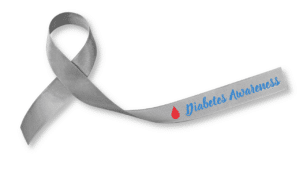
Therefore, in order to raise awareness, the American Academy of Ophthalmology has declared November as Diabetic Eye Disease Awareness Month. So, let’s take a deep dive and learn more about how diabetes can affect and cause eye diseases.
What Is Diabetic Eye Disease?
Diabetic eye disease is a group of eye health problems that people with diabetes can encounter as a complication of the disease. These problems include cataracts, glaucoma, and diabetic retinopathy. Actually, anyone that suffers from diabetes is at risk for blindness or vision loss due to diabetic eye disease.
But worst of all, there are little to no warning signs, meaning that you might already suffer from diabetic eye disease without knowing it. Thus, an annual dilated eye examination is the only effective way to reduce the risk. However, maintaining a healthy diet and weight, staying physically active, and avoiding smoking can also lessen the risk of diabetic eye disease.
What Is Diabetic Retinopathy?
Diabetic retinopathy happens when blood vessels in the retina get damaged and leak, which causes blurred vision. It’s important to mention that this is one of the most common and easily diagnosable diabetic eye diseases. In fact, the longer you have diabetes, the more likely you are to get diabetic retinopathy.
Fortunately, even though it can lead to blindness, diabetic retinopathy can be treated when diagnosed early. When dealing with diabetic retinopathy, laser treatments are the most successful way to reduce the risk of blindness. This treatment can slow and even stop the blood leaking from retina vessels, which reduces vision blurriness. Another procedure involves the injection of drugs into the eye which improves vision and blocks further leakages.
In Conclusion
All in all, it’s essential to remember that diabetes can cause eye diseases such as diabetic retinopathy. But while most of them can lead to blindness, early diagnosis and treatment can prevent that from happening. That’s why you should get your vision checked at least once a year, especially if you are suffering from diabetes. Additionally, you should remember that a healthy lifestyle can further reduce the risk of eye disease.
Ready to get your annual eye exam? Then it’s time to give Dr. Schnipper a call and relax knowing that your vision is in good hands.
